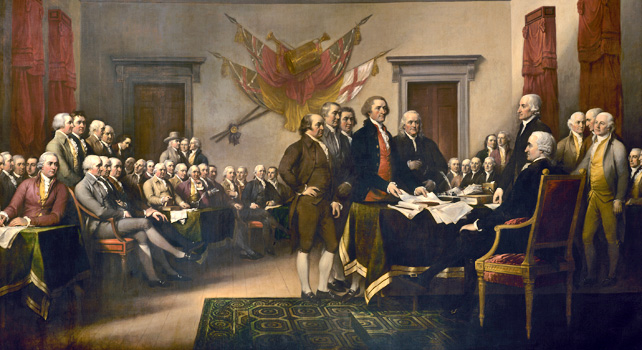The Constitutional Convention discusses presidential selection
During this month in 1787, delegates to the Constitutional Convention debate an important question:
How should a President be elected? You’d be surprised by the great variety of crazy ideas they had.
For starters, it wasn’t a foregone conclusion that we’d have only one President.
We’d fought a Revolution so we could escape a tyrannical British King. Why would we now invest all Executive power in one man again? Perhaps it would it be better to disperse power.
Can you imagine a world in which we elect three Presidents?! The possibility was discussed.
One Delaware delegate had another unusual idea: Maybe each state should “chuse its best Citizen.” Then the “Natl. Legislature” or “Electors appointed by it” could select an Executive.
In other words, imagine a world in which Texas voters go to the polls to select the Texan they most want as President. Californians do the same, selecting the best Californian. Each state selects its ideal candidate. Then Congress chooses one of these 50 nominees as President.
Wouldn’t that be some crazy process?!
Despite these random ideas, two election methods stayed at the forefront of the discussion for much of the Convention: legislative selection (i.e. Congress chooses the President) versus a national, direct popular election.
The small states, in particular, worried about a direct election. They were sure that they would be constantly outvoted by the large states.
Roger Sherman of Connecticut believed that the “largest State will have the best chance for the appointment.” Charles Pinckney of South Carolina agreed. “An Election by the people,” he observed, “[is] liable to the most obvious & striking objections. They will be led by a few active & designing men. The most populous States by combining in favor of the same individual will be able to carry their points.”
At one point, another delegate from Delaware admonished the large states rather forcefully. “I do not, gentlemen, trust you,” Gunning Bedford thundered. “If you possess the power, the abuse of it could not be checked; and what then would prevent you from exercising it to our destruction?”
Ultimately, the delegates brokered a compromise. As it operates today, our elections are a blend of democracy (state-level elections among individuals on Election Day) and federalism (an election among the states themselves in the Electoral College vote). Large states have more electoral votes, reflecting their greater populations. But small states are guaranteed a minimum of three votes, no matter what.
The Electoral College has come under attack in recent months. It’s been called archaic, a relic of slavery—and even worse. Some of these allegations are in danger of becoming conventional wisdom, yet nothing could be further from the truth. To the contrary, the delegates had at least one, much bigger concern that summer: How could the needs of large vs. small states be balanced? They took the matter seriously, discussing the issue of presidential selection on 21 separate days at the Constitutional Convention. The matter prompted more than 30 distinct votes.
The Electoral College was created with much thought and great care. If nothing else, the system deserves serious study before it is too casually thrown away by a generation that didn’t first take time to understand it.
This entry was posted in American History — 1783 to 1799. Bookmark the permalink

